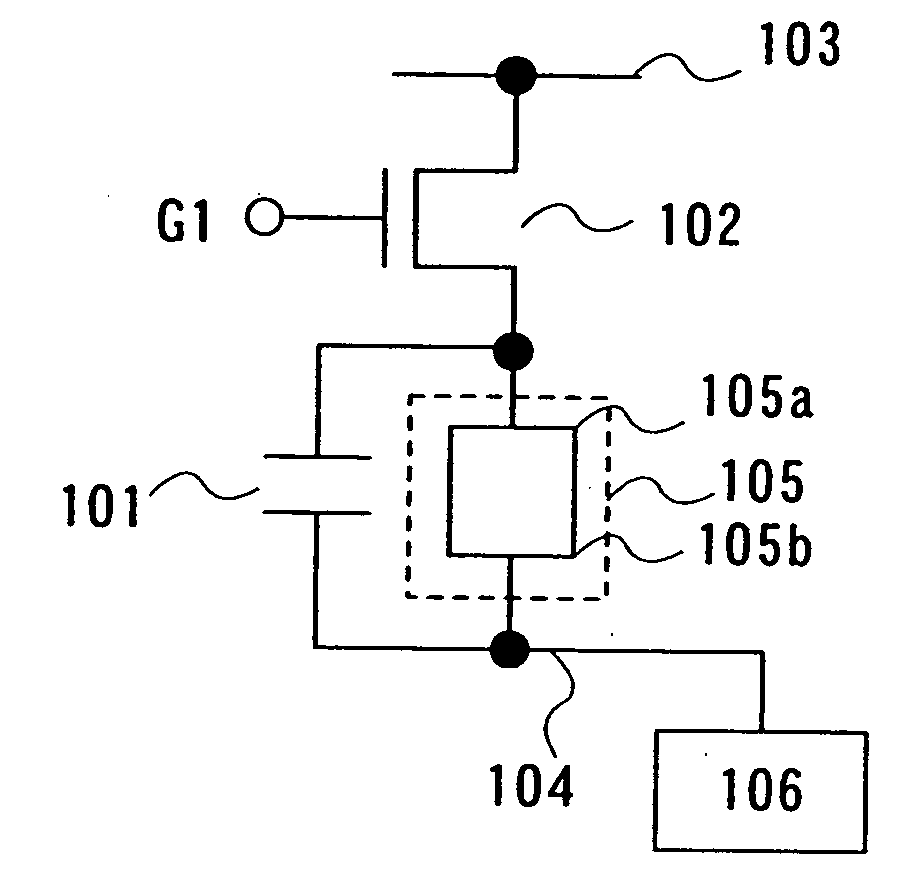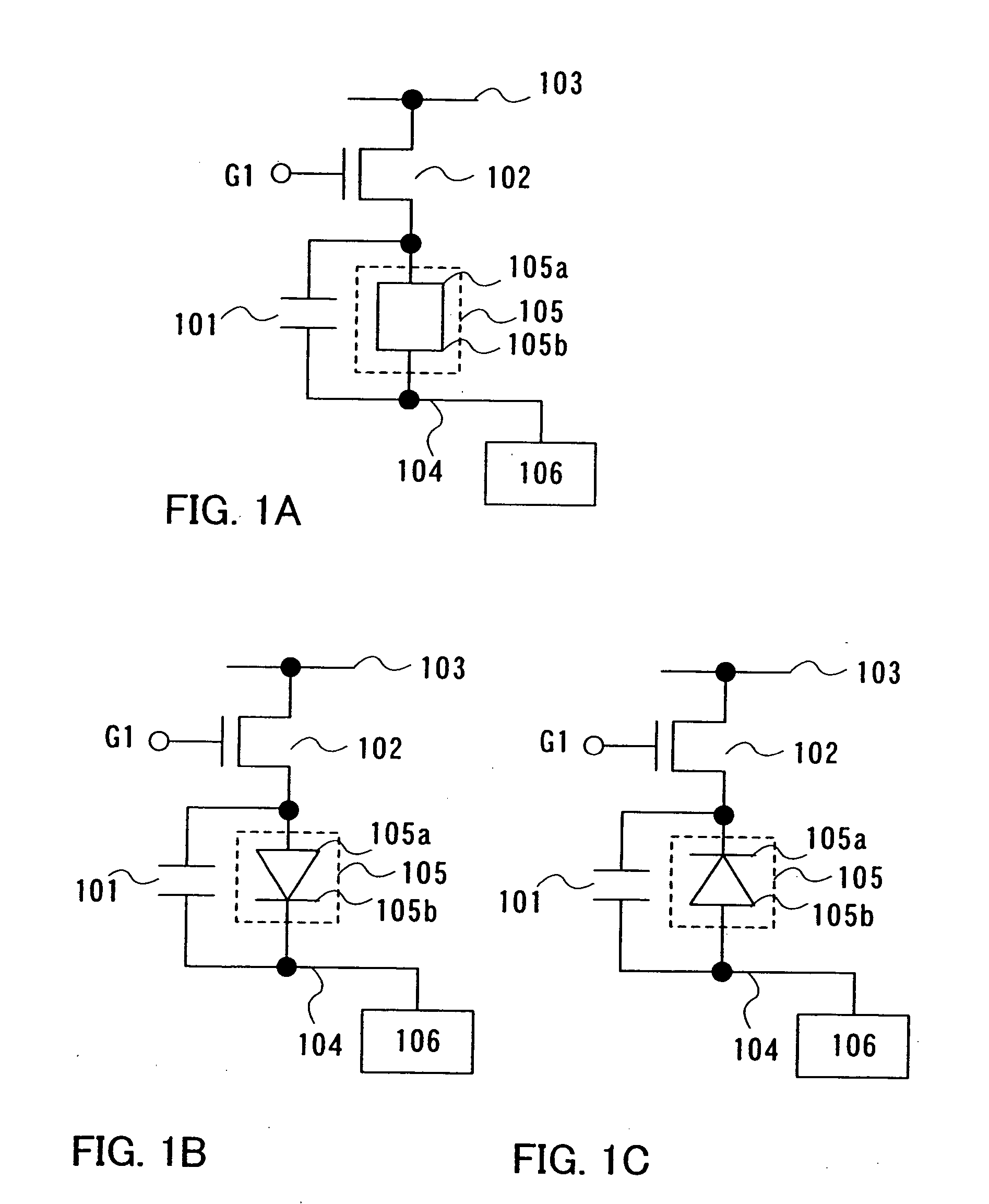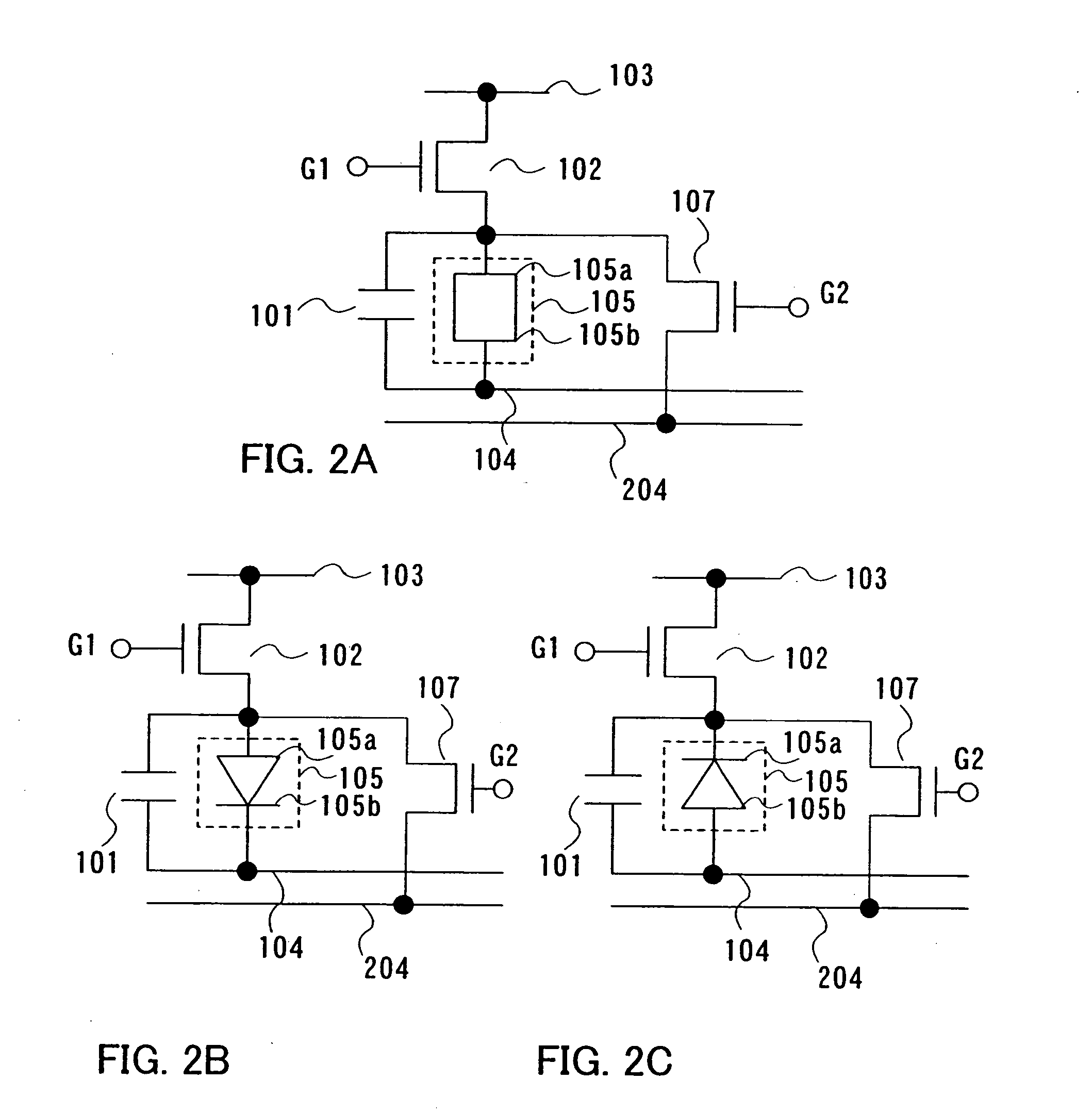Display device and driving method of the same
a technology of a display and a driving method, applied in the field of display devices, can solve the problems of reducing the contrast of a display, and achieve the effects of reducing the grayish black effect, reducing power consumption, and increasing contras
- Summary
- Abstract
- Description
- Claims
- Application Information
AI Technical Summary
Benefits of technology
Problems solved by technology
Method used
Image
Examples
embodiment mode 1
[0052] An example in which the first and third configurations are used in combination is described with reference to FIGS. 1A to 1C. In FIGS. 1A to 1C, reference numeral 105 denotes a light emitting element, 102 denotes a thin film transistor, 103 denotes a first power source line, 104 denotes a second power source line, 101 denotes a capacitor, and 106 denotes a circuit for setting a potential. The circuit 106 for setting a potential corresponds to the first configuration. The capacitor 101 corresponds to the third configuration. The light emitting element 105 has two electrodes and emits light at a luminance according to a current value of a current flowing between the two electrodes. One of the two electrodes of the light emitting element 105 is referred to as a first electrode 105a while the other is referred to as a second electrode 105b.
[0053] A method for using the first and third configurations in combination is described with reference to FIG. 1A.
[0054] When the thin film...
embodiment mode 2
[0066] An example of using the second and third configurations in combination is described with reference to FIGS. 2A to 2C. In FIGS. 2A to 2C, the same reference numerals are used for the same portions as in FIGS. 1A to 1C, and a description thereon is omitted. Reference numeral 107 denotes a thin film transistor. The thin film transistor 107 and a third power source line 204 correspond to the second configuration. The capacitor 101 corresponds to the third configuration.
[0067] A method for using the second and third configurations in combination is described in details with reference to FIG. 2A.
[0068] When the thin film transistor 102 connected in series to the light emitting element 105 is selected to be turned off, the thin film transistor 107 is selected to be turned on by controlling a potential G2 applied to a gate thereof. In this manner, a potential of the third power source line 204 is applied to the first electrode 105a. When the thin film transistor 107 is selected to ...
embodiment mode 3
[0074] An example of using the first and third configurations in combination is described with reference to FIGS. 3A to 3D. In FIGS. 3A to 3D, the same reference numerals are used for the same portions as in FIGS. 1A to 1C and a description thereon is omitted.
[0075] Each of FIGS. 3A and 3B corresponds to FIG. 1A provided with the capacitor 108. The capacitor 108 is provided to hold a gate-source voltage of the thin film transistor 102. FIG. 3A shows an example where the thin film transistor 102 has a source on a side connected to the first power source line 103. FIG. 3B shows an example where the thin film transistor 102 has a source on a side connected to the first electrode 105a of the light emitting element 105.
[0076] A drain current of the thin film transistor 102 changes according to a potential difference between a source potential thereof and the gate potential G1. Even if the gate potential G0 of the thin film transistor 102 is controlled, when a source potential changes, ...
PUM
 Login to View More
Login to View More Abstract
Description
Claims
Application Information
 Login to View More
Login to View More - R&D
- Intellectual Property
- Life Sciences
- Materials
- Tech Scout
- Unparalleled Data Quality
- Higher Quality Content
- 60% Fewer Hallucinations
Browse by: Latest US Patents, China's latest patents, Technical Efficacy Thesaurus, Application Domain, Technology Topic, Popular Technical Reports.
© 2025 PatSnap. All rights reserved.Legal|Privacy policy|Modern Slavery Act Transparency Statement|Sitemap|About US| Contact US: help@patsnap.com



